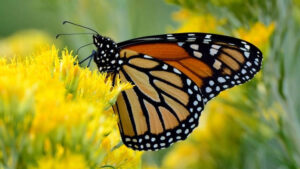JULY 22, 2022

In what comes as positive news for tiger reserves, conservationists across the world, the population of tigers has increased by 40 per cent since the last assessment in 2015. There are currently between 3,726 and 5,578 tigers in the wild worldwide, according to the latest figures by the International Union for Conservation of Nature (IUCN).
IUCN released its Red List which indicates that among the 147,517 listed species, 41,459 are threatened with extinction.
The latest findings revealed that 40 per cent jump in the tiger population globally is due to improvements in monitoring, showing that there are more tigers than previously thought, and the number of tigers globally appears to be stable or increasing.
“While this reassessment confirms that the tiger remains Endangered on the IUCN Red List, the population trend indicates that projects such as the IUCN Integrated Tiger Habitat Conservation Programme are succeeding and recovery is possible as long as conservation efforts continue,” IUCN said in a statement.

A tiger is seen during a jungle safari at the Ranthambore National Park in Ranthambore around 200kms from Jaipur. (Photo: AFP)
The organization listed poaching, hunting of their prey, habitat fragmentation, and destruction due to the growing pressures of agriculture and human settlement as some of the major challenges facing the Panthera tigris species in the world. “Tiger population recovery, however, shows us that solving complex conservation challenges is possible and within our reach. Although tigers are still endangered, their populations appear to be stable or increasing,” Dr. Jon Paul Rodríguez, Chair of the IUCN Species Survival Commission said.
MONARCH BUTTERFLY CLOSER TO EXTINCTION
Scientists have put the iconic orange-and-black insect on the endangered list because of its fast-dwindling numbers. The IUCN added the migrating monarch butterfly for the first time to its “red list” of threatened species and categorized it as “endangered” — two steps from extinct.

The migratory monarch butterfly (Danaus plexippus plexippus) has entered the IUCN Red List as Endangered. (Photo: Joe Schelling)
The group estimates that the population of monarch butterflies in North America has declined between 22% and 72% over 10 years, depending on the measurement method. In North America, millions of monarch butterflies undertake the longest migration of any insect species known to science.
After wintering in the mountains of central Mexico, the butterflies migrate to the north, breeding for multiple generations along the way for thousands of miles. The offspring that reach southern Canada then begin the trip back to Mexico at the end of summer. The United States has not listed monarch butterflies under the Endangered Species Act, but several environmental groups believe they should be listed.
Climate change has emerged as a major threat to the species as severe weather has killed millions of butterflies.

































































































